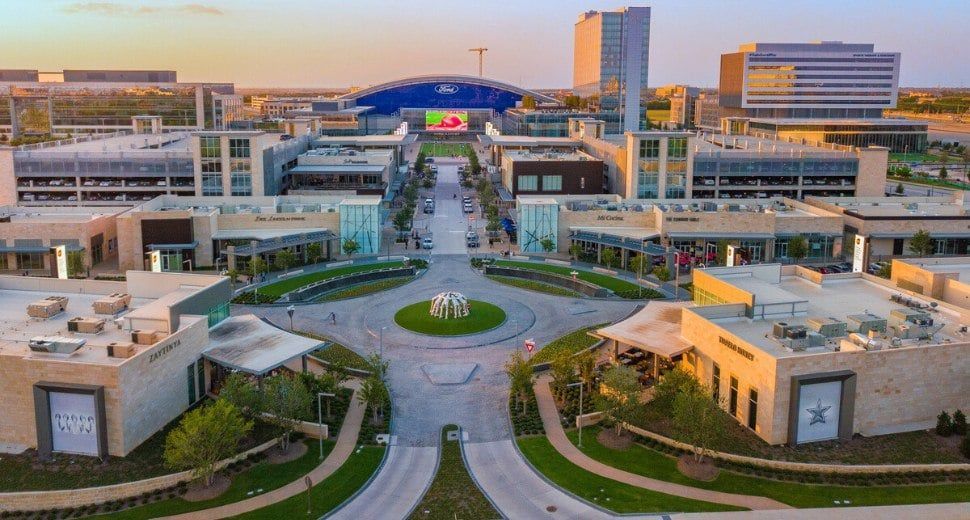Guía de los condados de Dallas-Fort Worth (DFW)

Founded in 1846, Dallas County is the historic and economic center of the Dallas-Fort Worth metroplex, with a population exceeding 2.7 million as of 2024, making it one of the most populous counties in Texas. Originally established as a trading post near the Trinity River, the county experienced rapid growth in the 19th and 20th centuries, driven by its strategic location as a railroad hub and later by the discovery of oil and the rise of finance, technology, and telecommunications industries. This development transformed Dallas County into a thriving metropolitan area with a diverse and robust economy that includes sectors such as healthcare, manufacturing, transportation, and corporate services. The county's urban landscape is defined by its iconic skyline, featuring landmarks like the Bank of America Plaza and Renaissance Tower. Dallas County encompasses a wide range of communities and neighborhoods, from affluent residential areas and industrial zones, reflecting varied socioeconomic conditions. It is home to major educational institutions, healthcare facilities, and corporate headquarters that contribute to its status as a regional economic powerhouse. Additionally, Dallas County preserves significant historical sites such as Dealey Plaza—the location of President John F. Kennedy’s assassination—as well as the Old Red Museum and Dallas Heritage Village, which honor its pioneer and early settler history. With its rich historical roots and continuous economic growth, Dallas County remains a central pillar of the region’s development.

Denton County was established in 1846 and named after John B. Denton, an early pioneer and lawyer. Initially, the county’s economy centered around agriculture, ranching, and trade, supported by its strategic location along early transportation routes. The arrival of the railroads in the late 19th century accelerated population growth and economic development, connecting Denton County to the broader Dallas–Fort Worth region. Today, the county’s population exceeds one million residents, reflecting rapid suburban expansion and increasing commercial activity. Denton County’s economic base has diversified significantly, with education, manufacturing, healthcare, logistics, and retail sectors playing key roles. The presence of major universities, including the University of North Texas and Texas Woman’s University, contributes not only to the educational landscape but also to research and innovation in the area. The county features a mix of historic downtowns and new master-planned communities, combining traditional small-town charm with modern amenities. Infrastructure development supports the county’s growth, with well-maintained transportation networks and expanding public services. The socioeconomic profile of Denton County is varied, with residential areas ranging from established neighborhoods to newer developments catering to a range of income levels. This balance of historical roots, economic diversification, and steady population growth positions Denton County as a key player in the continued expansion and vitality of the Dallas–Fort Worth metroplex.

Established in 1846 and named after Collin McKinney, a signer of the Texas Declaration of Independence, Collin County has transformed significantly over the past century. Originally a predominantly rural and agricultural area, the county’s growth accelerated dramatically with the expansion of railroads and highways connecting it to the Dallas–Fort Worth metroplex. This connectivity spurred rapid suburban development, turning Collin County into one of the fastest-growing counties in the United States. As of 2024, the county’s population exceeds 1.1 million residents, reflecting substantial residential and commercial expansion. Collin County’s economy has diversified from its agricultural roots to become a hub for technology, corporate headquarters, healthcare, and retail. The presence of major employers and quality infrastructure supports a thriving business environment, attracting professionals and families seeking suburban amenities with convenient access to urban centers. Cities such as Plano, Frisco, and McKinney lead the county’s growth with planned communities, educational institutions, and recreational facilities. The county balances its rapid development with preservation of historic downtown areas and open spaces, maintaining a blend of modern living and community heritage. Collin County’s socioeconomic landscape features a mix of residential neighborhoods, commercial corridors, and industrial parks, fostering a balanced and resilient local economy. This combination of growth, infrastructure, and quality of life continues to position Collin County as a vital part of the Dallas–Fort Worth region’s ongoing development.

Tarrant County, established in 1849 and named after General Edward H. Tarrant, has a rich history shaped by its role in North Texas frontier defense and early settlement. The county seat, Fort Worth, earned the nickname “Cowtown” for its pivotal role in the cattle drives and livestock trade during the late 19th century. The arrival of the railroad transformed the region into a transportation and commercial hub, attracting businesses and fostering urban growth. In the 20th century, the development of major military installations and the aerospace industry further expanded the local economy, establishing Tarrant County as a center for innovation and industry. Today, Tarrant County is home to more than 2.1 million residents and serves as one of the most dynamic economic areas in Texas. Its economy thrives on key sectors such as aerospace, defense, manufacturing, healthcare, and trade. The region offers a unique combination of historic charm and modern development, with preserved Western heritage sites alongside a contemporary urban skyline. Cultural institutions, performing arts venues, and diverse commercial centers contribute to its vibrant community life. Tarrant County continues to balance growth with its historical identity, making it a place where tradition and progress coexist, shaping a strong foundation for its future.




